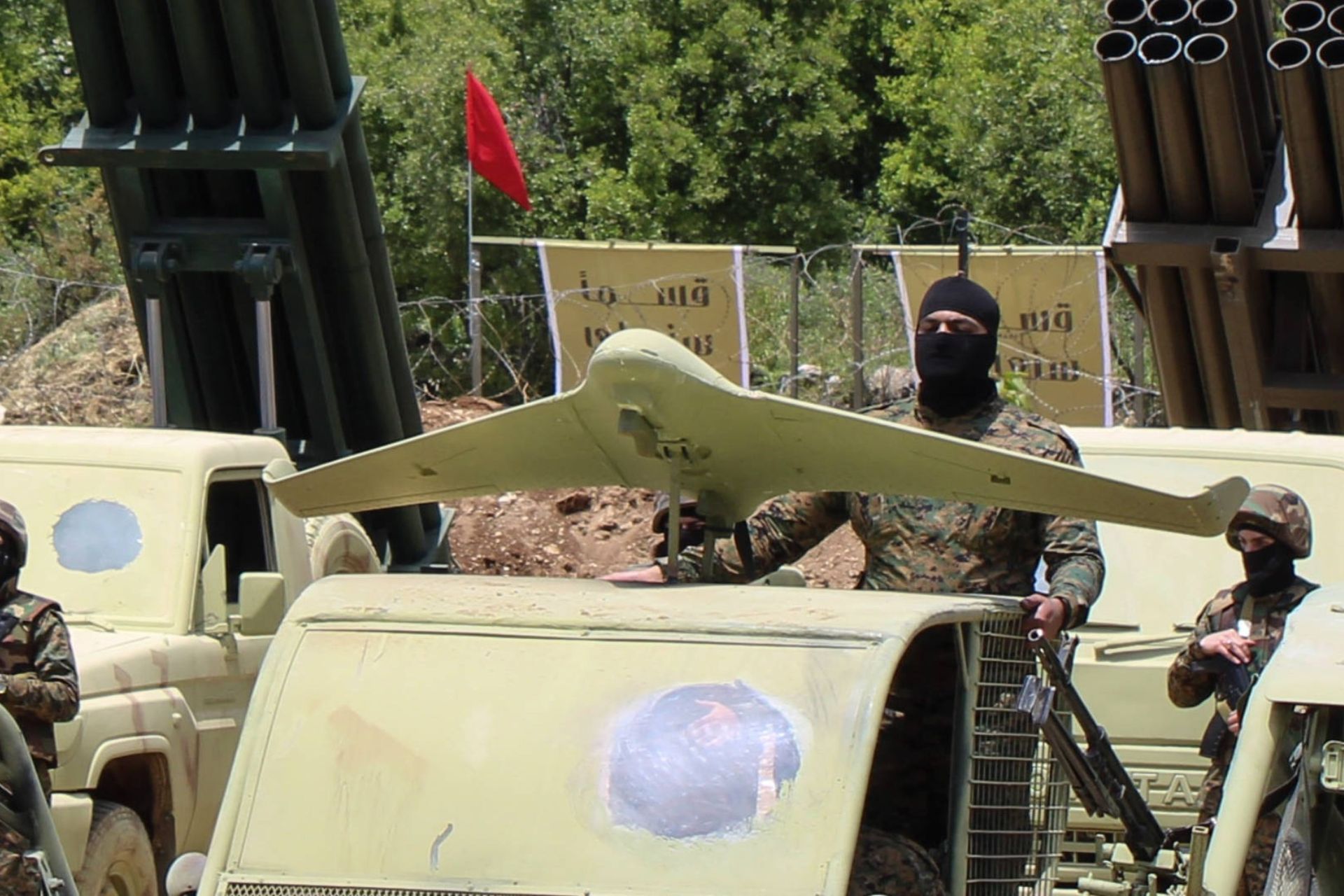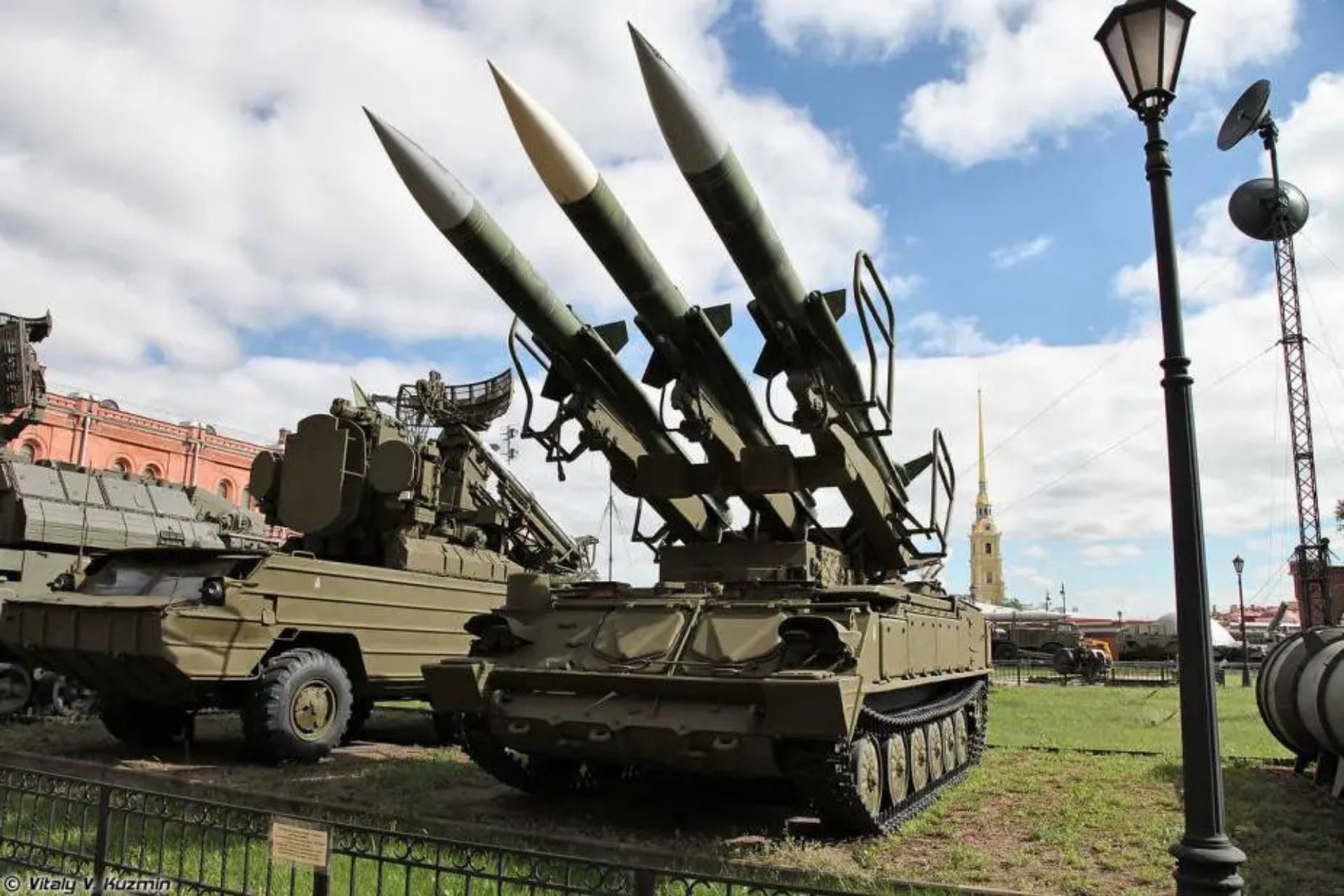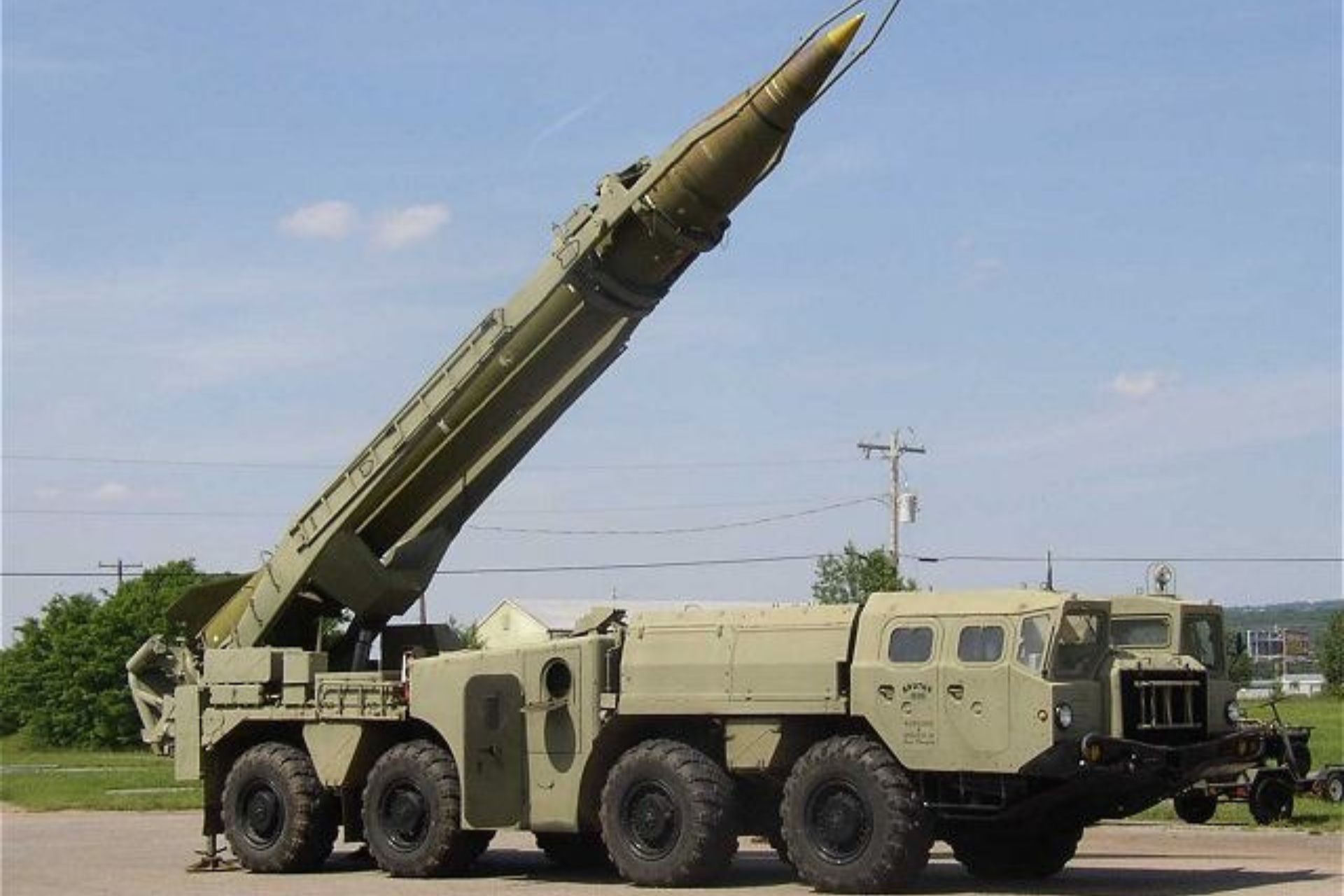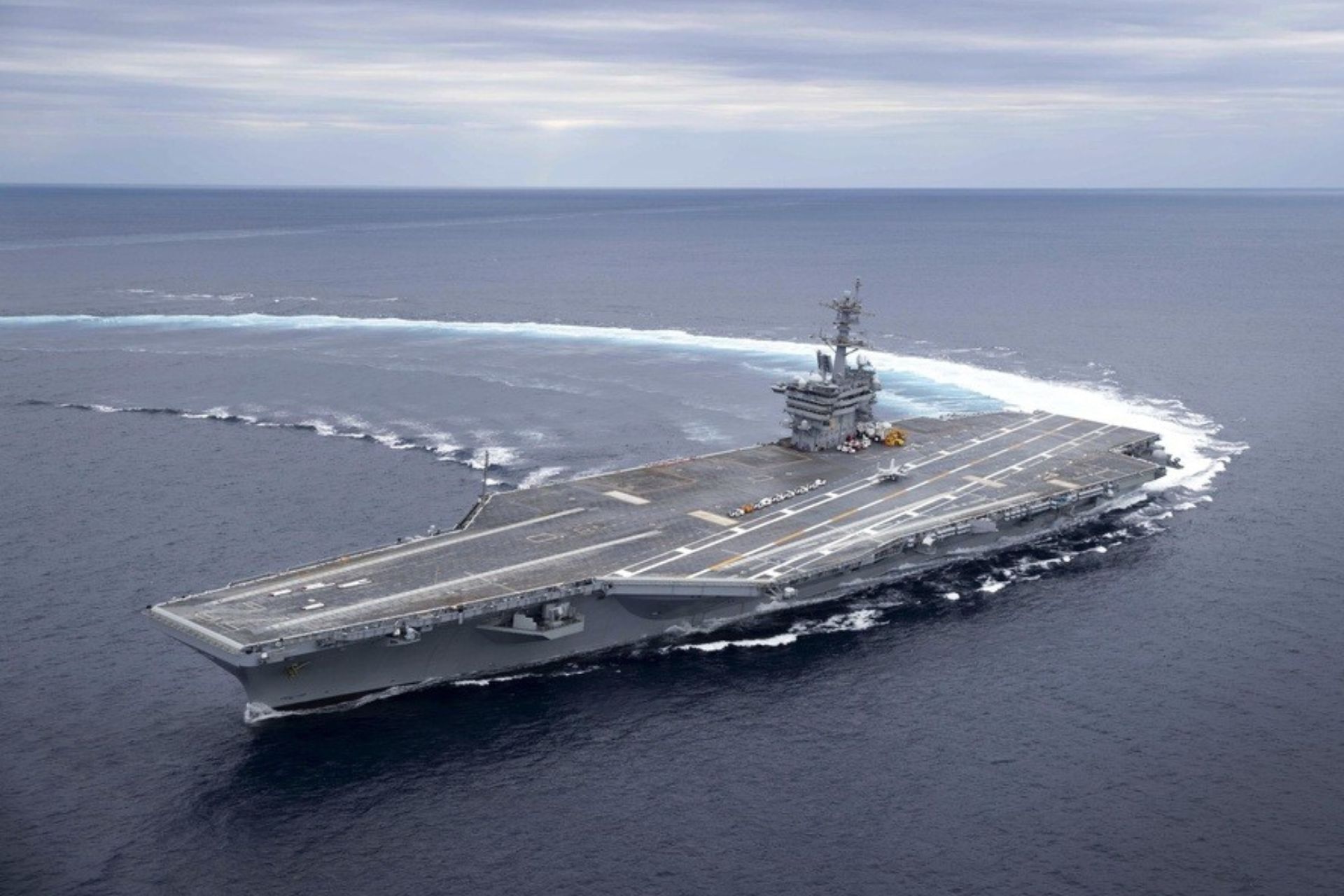Breaking News
Detailed Analysis of Hezbollah's Weapons: An Imminent Threat to Israel?.
Tensions between Israel and Hezbollah have reached new heights with recent events. The Hamas attack on October 7, 2023, followed by the ongoing war in Gaza, has intensified confrontations in the region. On July 31, 2024, Israel conducted simultaneous raids in Tehran and Beirut, eliminating the Hamas leader and the Hezbollah military chief. These actions have highlighted the volatility of the situation and the imminent possibility of a coordinated response from Iran, Hezbollah, and Hamas. This article examines Hezbollah's arsenal, military capabilities, and the threat it poses to Israel. Follow Army Recognition on Google News at this link

The fact that Hezbollah manufactures some of these drones locally reinforces their operational independence and their ability to carry out coordinated attacks with other types of weapon, even though most of them are Iranian. (Picture source: Hanna Davis)
Hezbollah, founded in 1982 in response to the Israeli invasion of Lebanon, has evolved into a major political and military force in Lebanon. Supported by Iran, Hezbollah aims to resist Israeli occupation and defend Shiite interests in the region. Since its inception, Hezbollah has been involved in numerous conflicts with Israel, most notably the 2006 war, which caused significant human and material losses on both sides. The recent escalation in tensions is rooted in this complex history of rivalry and confrontation.
Hezbollah's Arsenal: Details and Capabilities:
Missiles and Rockets
Hezbollah possesses an impressive arsenal of rockets and ballistic missiles, estimated between 120,000 and 200,000 units, including both unguided and guided weapons. Among the short-range rockets are the "Katyusha" (4-40 km) with explosive warheads of 6-20 kg, the Fajr-1 and its Type 63 derivatives (8-10 km) with 8 kg fragmentation charges, as well as the Burkan (10 km) and Falaq-1/2 (10-11 km) with explosive charges ranging from 50 to 120 kg. Long-range rockets include the Fajr-3 (43 km), Fajr-5 (75 km), and Raad-2/3 Uragan-type (60-70 km) with significant explosive capabilities. Hezbollah also has short-range ballistic missiles like the Zelzal-1/2 (125-210 km).
Their arsenal also includes intermediate-range ballistic missiles such as the Scud-B/C/D (300-500 km) with warheads of 600 to 985 kg, and short-range guided ballistic missiles like the Fateh-110/M-600 (250-300 km) with explosive charges of 450 to 500 kg. Iranian-made Falaq rockets can cause significant damage to targets near the Israeli border, such as Haifa. Long-range missiles like the Russian-origin Scuds can reach strategic targets in Israel, including Ben Gurion Airport and the Dimona nuclear plant. Advanced guidance systems provided by Iran have improved the accuracy of these missiles, increasing their battlefield effectiveness.

According to some analysts, Hezbollah may have acquired SA-6 air defenses (Picture source: Vitaly Kuzmin)
Drones
In recent months, Hezbollah has intensively used drones to monitor and attack Israeli positions, increasing its operational and autonomous capabilities. Iranian models like the Shahed 136, equipped with electro-optical and GPS guidance systems, enable precise strikes, posing a serious threat to Israeli infrastructure and forces. Iran supplies Hezbollah with a range of UAS (Unmanned Aerial Systems) for various roles. Multi-role drones include the Ayoub (Shahed-129) with a range of 2,000 km and 34 kg guided bombs, the Mirsad 2 (Mohajer 4) which can carry air-to-air missiles or unguided rockets with a range of 150 km, and the Karrar, capable of carrying 125-250 kg bombs or anti-ship missiles with a range of 1,000 km.
The Mirsad 1 (Ababil-T), used as a loitering munition, has a 40 kg explosive charge and a range of 120 km. For surveillance and reconnaissance missions, the Ma’arab (Qods Yasir) is equipped with electro-optical sensors and has a range of 200 km. Hezbollah's local manufacturing of some of these drones enhances their operational independence and their capability to conduct coordinated attacks with other types of weapons.
Anti-Aircraft and Anti-Ship Missiles
Hezbollah has a diverse arsenal of air defense and anti-ship missile systems. Their air defense systems include MANPADS (Man-Portable Air-Defense Systems) like the Misagh-1 and Misagh-2, with a range of 5 to 6 km and a 1.42 kg explosive charge, as well as SA-7 (9K32 Strela-2) and SA-16/18 (9K310 Igla-1/9K38 Igla) with respective ranges of 3.4 km and 0.5 km. For short-range surface-to-air missiles, Hezbollah uses the SA-8 (9K33 Osa) and SA-14 (9K34 Strela-3), with ranges of 10 km and 4.5 km. Medium-range systems include the SA-17 (9K40 Buk-M2) and SA-22 (Pantsyr-S1), capable of reaching targets up to 50 km and 20 km away.
Their arsenal also includes ZU-23 anti-aircraft guns with a range of 2.5 km, and surface-loitering munitions "358", with unspecified charge and range details. In terms of anti-ship missiles, Hezbollah possesses Russian Yakhont and Chinese Silkworm missiles, capable of targeting Israeli gas fields in the Mediterranean. An attack on these installations could severely disrupt Israel's energy supply. These defensive and offensive capabilities complicate Israeli air and naval operations, reducing their freedom of action in the region.

The Lebanese Hezbollah's Arsenal also includes intermediate-range ballistic missiles such as the Scud-B/C/D (300-500 km) with warheads of 600 to 985 kg (Picture source: Russian MoD)
Forces and Personnel
In 2021, Hassan Nasrallah, the Secretary General of Hezbollah, stated that Hezbollah had 100,000 fighters. Although this figure is realistic, it is not very certain and many specialists estimate that Hezbollah has approximately 45,000 fighters, including 20,000 full-time personnel. The al-Radouane unit is an elite force specializing in guerrilla operations and coordinated attacks. Hezbollah also maintains an extensive network of tunnels and trenches, primarily in southern Lebanon and the Bekaa Valley. These infrastructures allow discreet troop movements and secure storage of weapons and munitions, providing a strategic advantage in a prolonged conflict.
Hezbollah's arsenal represents a multidimensional threat to Israel. Missiles and rockets can target critical infrastructure and civilian areas, causing significant human and material losses. Drones enhance surveillance and precise strike capabilities, while anti-ship and air defense missiles complicate Israeli naval and aerial operations. In the event of escalation, Hezbollah could launch coordinated attacks with Hamas and pro-Iranian militias, increasing pressure on Israeli defenses.

An additional American aircraft carrier, The USS Abraham Lincoln, will be deployed to the Middle East, joining the USS Theodore Roosevelt patrolling the Gulf of Oman. (Picture source: USS DoD)
Israel has advanced defense systems, such as the Iron Dome, to intercept rockets and missiles. However, the sheer number of projectiles could overwhelm these systems. In response to a major attack, Israel might rely on military support from the United States, which has already expressed its willingness to back its ally in case of conflict. An additional American aircraft carrier will be deployed to the Middle East, joining the USS Theodore Roosevelt patrolling the Gulf of Oman.
Hezbollah's arsenal and military capabilities pose a serious threat to Israel's security. The current tensions could trigger a major conflict with devastating consequences for the region. The coming days will be crucial in determining whether an escalation can be avoided or if the region will head towards direct confrontation. The response from Israel's enemies leaves little doubt. After the United States and Great Britain, France called on its citizens to leave Lebanon immediately on August 4, 2024.


























